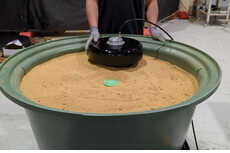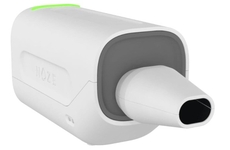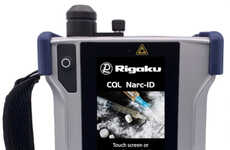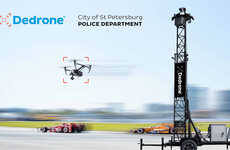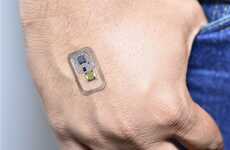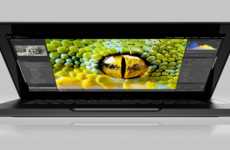
Researchers from UC Berkeley Discovered New Explosive Detection Forms
Alyson Wyers — July 23, 2014 — Tech
References: newscenter.berkeley.edu & gizmodo
According to a press release from UC Berkeley, new nanotechnology explosive detection could put bomb-sniffing dogs out of work. Berkeley researches explained they found a way to detect even "minute concentrations of explosives." The technological breakthrough resulted in small laser sensors that can be placed in a handheld device.
Comparable to picking out a blade of grass in a football field, this explosive detection nanotechnology consists of a semi-conductive layer of cadmium sulfide, magnesium fluoride and a silver sheet. Keeping nitro groups like DNT and TNT in mind, the team designed surface defects on the semi-conductor that reacts with the explosives to produce a light signal. Explosives have an electron deficiency so the stronger the deficiency, the stronger the light signal will be.
Hopefully this scientific innovation will result in shorter security lines at the airport.
Comparable to picking out a blade of grass in a football field, this explosive detection nanotechnology consists of a semi-conductive layer of cadmium sulfide, magnesium fluoride and a silver sheet. Keeping nitro groups like DNT and TNT in mind, the team designed surface defects on the semi-conductor that reacts with the explosives to produce a light signal. Explosives have an electron deficiency so the stronger the deficiency, the stronger the light signal will be.
Hopefully this scientific innovation will result in shorter security lines at the airport.
Trend Themes
1. Explosive Detection Nanotechnology - The breakthrough in nanotechnology creates new ways of detecting minute concentrations of explosives and could potentially replace bomb-sniffing dogs.
2. Laser Sensor Technology - The development of small laser sensors that can be placed in a handheld device allows for convenient and efficient explosive detection.
3. Surface Defect Design - The discovery of surface defects on semi-conductors that react with explosives to produce a strong light signal opens up opportunities for new sensor technologies.
Industry Implications
1. Security - The security industry can adopt nanotechnology and laser sensors to develop more efficient and accurate explosive detection systems.
2. Military - The military can leverage the use of laser sensors and nanotechnology for improved explosive detection in war zones and combat scenarios.
3. Transportation - The transportation industry can benefit from the use of this new technology for more effective security screening measures at airports, train stations, and other high-risk areas.
2.1
Score
Popularity
Activity
Freshness

